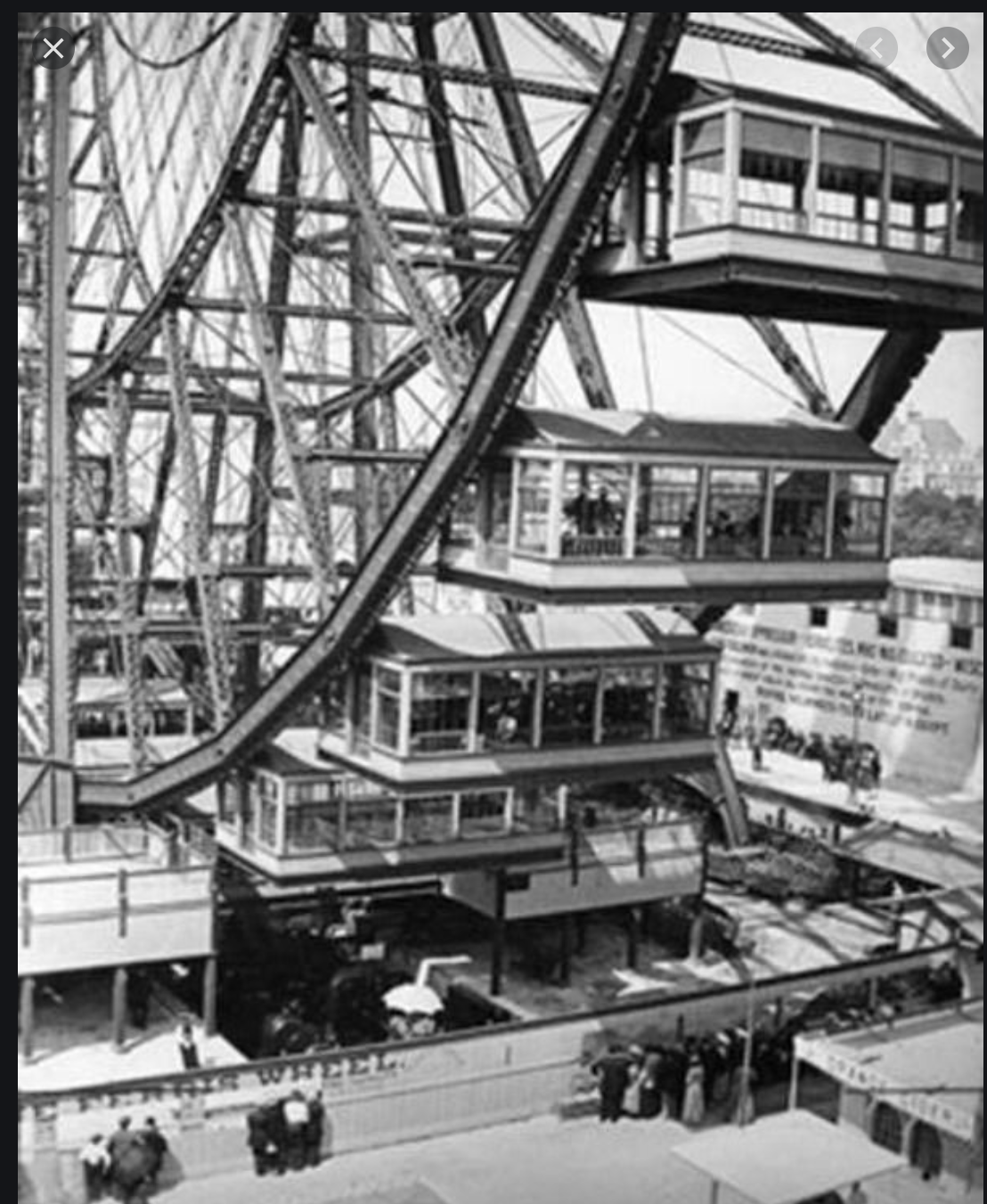1891. Chicago was scheduled to host the 1893 World’s Fair, known as the World's Columbian Exposition. Daniel Burnham, the architect overseeing the exposition, was charged with turning a square mile of Chicago into a world dazzling showpiece. He assembled an All-Star cast of designers and engineers including the brilliant Nikola Tesla, to make it happen. His directive: "Make no little plans."
The City of Light, 1893, Chicago World’s Columbian Exposition. The 1893 Chicago fair did exactly what the organizers wanted of its designers---to think big. Nikola Tesla won the contract over Thomas Edison to light up the fair demonstrating his novel approach for delivering electricity: the high voltage alternating current, also known as AC. Edison’s version of electricity was the less efficient, low voltage direct current (DC.)
Burnham issued a challenge to American engineers to design a monument of the fair that would surpass the Eiffel Tower, designed in by Gustave Eiffel for the 1889 Paris International Exposition. Burnham wanted something "original, daring, and unique.”
A 33-year old engineer from Pittsburgh, George Washington Gale Ferris, Jr. (1859-1896) had an idea. He made a quick sketch and added some specifications, then showed the drawing to Burnham.
Ferris' idea was a wheel, a giant wheel large enough to provide a bird’s eye view the entire Chicago exhibition and surrounding landscape. A wheel made of steel that Ferris said would "out-Eiffel Eiffel." The idea was too ostentatious for even Burnham. "Too fragile," was his reply to the concept of a giant wheel held up by slender rods rivaling the height of the recently opened Statue of Liberty.
Ferris, who began his career in the railroad industry and then moved into bridge building knew about steel construction. After a bit of convincing and then a bit more fundraising from investors to build the wheel ($400,000-500,000 in those days,) Ferris made his wheel and proved his vision viable.
The Ferris Wheel, also called the Chicago Wheel in the day, had 36 gondola cars, each fitted with 40 revolving chairs and able to accommodate up to 60 people, giving the wheel a total capacity of 2,160. When the 1893 Chicago World’s Columbian Exhibition opened, it carried some 38,000 passengers daily, taking 20 minutes to complete two revolutions, the first involving six stops to allow passengers to exit and enter and the second a nine-minute non-stop rotation, for which the ticket holder paid 50 cents.
Soaring over 264 feet in the air, Ferris’ wheel was an outstanding success.
Bird’s eye view from inside the original Ferris Wheel.
“It is an indescribable sensation,” wrote a reporter named Robert Graves, “that of revolving through such a vast orbit in a bird cage.”
Over 1.9 million people rode the wheel during the 1893 Chicago Exhibition, paying 50 cents to take the double rotation 20 minute ride to experience an aerial panoramic view hardly anyone had seen before.
Sadly, the original Ferris Wheel from the Chicago exposition was sold for scrap and demolished in 1906.
Although the original Ferris Wheel no longer exists and is but a relic to history, Ferris’ idea lives on--in boardwalks and local festivals and fairgrounds all around the world.
The Ferris wheel is a slice of Americana that lives on in memories and nostalgia.
Seattle Great Wheel, Seattle Waterfront. 2020.
Mary Lamery is a lifelong resident of Seattle, Washington, USA and native of the Pacific Northwest.
Lamery paints regional landscape in a manner that leans towards 19th century French Impressionism. Her landscapes invite the viewer to add to the backstory of the composition through personal identification with the paintings and story telling of the experience.
Follow Mary on Instagram.














